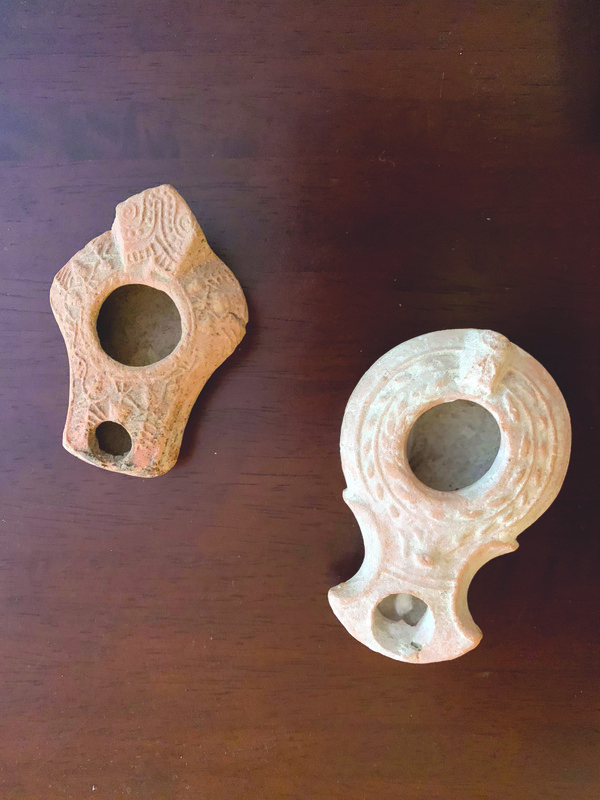If you free associate on the word “Hanukkah,” it is likely that among your first mental images will be a Hanukkiyah – maybe a craft project, the work of your own Sunday School-age hands? Or the family’s customary menorah when you were a child? Or an inheritance from a late grandparent that you took to your college dorm? Or perhaps one that you kindled when raising your children? It is likely that all these menorah memories involve a candelabrum with eight candle cups and a ninth one at a different level.
But was that the original Hanukkah menorah? Demonstrably not. Both literary and archaeological sources tell us that our first tradition was to have a lamp. It was filled with a plant-derived oil, preferably olive oil. The amount of oil and the length of wick would determine how long it would burn – the mandated duration was the length of the evening rush hour, so that a maximum number of people, walking home past our doorway, would see our effort to publicize the miracle of the holiday. Candles came later, probably when many of the Jewish people migrated away from the Mediterranean basin into climate zones too cold for olive trees to flourish.
The Babylonian Talmud, an encyclopedia of Jewish law, lore, and Bible interpretation from the centuries after the destruction of the Second Jerusalem Temple, preserves records of how we practiced our religion in its formative era. The standard practice for Hanukkah, we are told (Tractate Shabbat 21b), was “one lamp per household.” That is to say, from the first through the eighth nights of Hanukkah, the householders would light one lamp in observance of the holiday. The preferable place to display that lamp was in a sconce outside the house, to the left of the main door. That way, the house was framed by symbols of Jewish identity: the mezuzah on the right side of the door (as you face the entrance from the outside) and the Hanukkah lamp on the left side.
It is the nature of fashion to change. The unadorned, hand-made, pinched-spout lamps of Judean households were themselves an innovation from still-older, simple, saucer lamps, because the pinched spout supported the wick. But that style, in turn, gave way to fancier designs. When Hanukkah was a young festival, in the second century Before the Common Era, the fashion in other parts of the Hellenistic world was to use molds to create lamps. Obviously, having a mold made it easier to produce large quantities of lamps and to put deluxe, elaborate lamps within reach of many more households. It is quite likely, therefore, that some of our ancestors substituted a fancier lamp for the “cocked hat” style of the older lamps.
Loyal Jews were not the only ones using lamps. In the pre-Thomas Edison era, lamps were a household necessity. Even in sites from the Land of Israel, there are numerous examples of lamps that definitely would not have been appropriate for Hanukkah use. Floral and geometric motifs are fine, but not idolatrous themes. The next lamp, featuring pictures of the Greek demigod “Cupid,” would have been unorthodox, to say the least!
How did we get from the Rabbinic norm of “one lamp per household, each night” to the contemporary practice? The Talmud relates that some people, more punctilious in their observance, would have a lamp for each member of the household. There is an echo of this practice in many Jewish homes today, where the number of Sabbath candles increases with each addition to the family.
Finally, we get to the “punctilious among the punctilious” – clearly not the majority in its own day (the 1st century Before the Common Era), but the standard practice today. Such people would light a different number each day. One custom was to begin with eight lamps and reduce the number of lamps by one each night, until only one lamp would be lit on the final night of Hanukkah. That was the practice of the School of Shammai. The famous rival of that academy, the School of Hillel, reversed the order. They lit one lamp on the first night, adding one each night and concluding with eight on the final night – from which our now-standard practice descends.
Like life in general, and certainly like Judaism, Hanukkah observances reflect the ever-shifting balance of the old and the new.
Dr. Rabbi Michael Panitz is the rabbi at Temple Israel in Norfolk.



